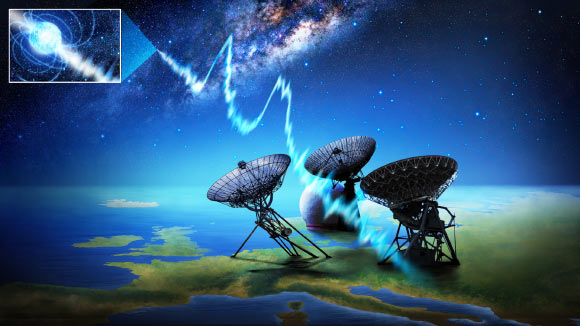Astronomers have detected two more millisecond-duration radio bursts from SGR 1935+2154, a magnetar located over 14,000 light-years away in the constellation of Vulpecula.
The detection supports the hypothesis that — at least some — fast radio bursts are emitted by magnetars at cosmological distances.
Fast radio bursts (FRBs) are mysterious and rarely detected bursts of radio waves from space.
These events have durations of milliseconds and exhibit the characteristic dispersion sweep of radio pulsars.
They emit as much energy in one millisecond as the Sun emits in 10,000 years, but the physical phenomenon that causes them is unknown.
Continued...
Source
The detection supports the hypothesis that — at least some — fast radio bursts are emitted by magnetars at cosmological distances.
Fast radio bursts (FRBs) are mysterious and rarely detected bursts of radio waves from space.
These events have durations of milliseconds and exhibit the characteristic dispersion sweep of radio pulsars.
They emit as much energy in one millisecond as the Sun emits in 10,000 years, but the physical phenomenon that causes them is unknown.
Continued...
Source






















